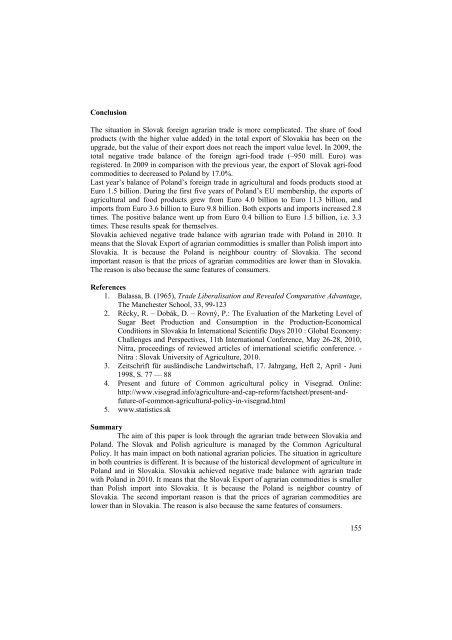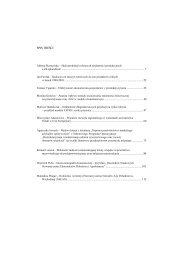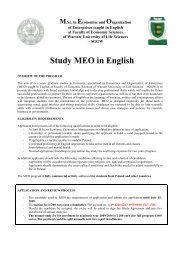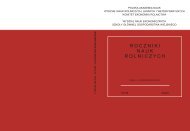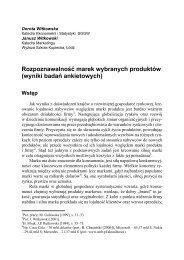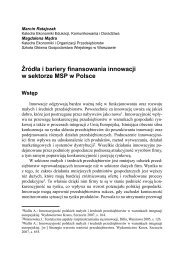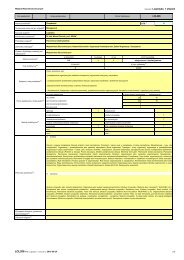pobierz - WydziaÅ Nauk Ekonomicznych SGGW w Warszawie
pobierz - WydziaÅ Nauk Ekonomicznych SGGW w Warszawie
pobierz - WydziaÅ Nauk Ekonomicznych SGGW w Warszawie
You also want an ePaper? Increase the reach of your titles
YUMPU automatically turns print PDFs into web optimized ePapers that Google loves.
ConclusionThe situation in Slovak foreign agrarian trade is more complicated. The share of foodproducts (with the higher value added) in the total export of Slovakia has been on theupgrade, but the value of their export does not reach the import value level. In 2009, thetotal negative trade balance of the foreign agri-food trade (–950 mill. Euro) wasregistered. In 2009 in comparison with the previous year, the export of Slovak agri-foodcommodities to decreased to Poland by 17.0%.Last year’s balance of Poland’s foreign trade in agricultural and foods products stood atEuro 1.5 billion. During the first five years of Poland’s EU membership, the exports ofagricultural and food products grew from Euro 4.0 billion to Euro 11.3 billion, andimports from Euro 3.6 billion to Euro 9.8 billion. Both exports and imports increased 2.8times. The positive balance went up from Euro 0.4 billion to Euro 1.5 billion, i.e. 3.3times. These results speak for themselves.Slovakia achieved negative trade balance with agrarian trade with Poland in 2010. Itmeans that the Slovak Export of agrarian commoditties is smaller than Polish import intoSlovakia. It is because the Poland is neighbour country of Slovakia. The secondimportant reason is that the prices of agrarian commodities are lower than in Slovakia.The reason is also because the same features of consumers.References1. Balassa, B. (1965), Trade Liberalisation and Revealed Comparative Advantage,The Manchester School, 33, 99-1232. Récky, R. – Dobák, D. – Rovný, P.: The Evaluation of the Marketing Level ofSugar Beet Production and Consumption in the Production-EconomicalConditions in Slovakia In International Scientific Days 2010 : Global Economy:Challenges and Perspectives, 11th International Conference, May 26-28, 2010,Nitra, proceedings of reviewed articles of international scietific conference. -Nitra : Slovak University of Agriculture, 2010.3. Zeitschrift für ausländische Landwirtschaft, 17. Jahrgang, Heft 2, April - Juni1998, S. 77 — 884. Present and future of Common agricultural policy in Visegrad. Online:http://www.visegrad.info/agriculture-and-cap-reform/factsheet/present-andfuture-of-common-agricultural-policy-in-visegrad.html5. www.statistics.skSummaryThe aim of this paper is look through the agrarian trade between Slovakia andPoland. The Slovak and Polish agriculture is managed by the Common AgriculturalPolicy. It has main impact on both national agrarian policies. The situation in agriculturein both countries is different. It is because of the historical development of agriculture inPoland and in Slovakia. Slovakia achieved negative trade balance with agrarian tradewith Poland in 2010. It means that the Slovak Export of agrarian commodities is smallerthan Polish import into Slovakia. It is because the Poland is neighbor country ofSlovakia. The second important reason is that the prices of agrarian commodities arelower than in Slovakia. The reason is also because the same features of consumers.155


